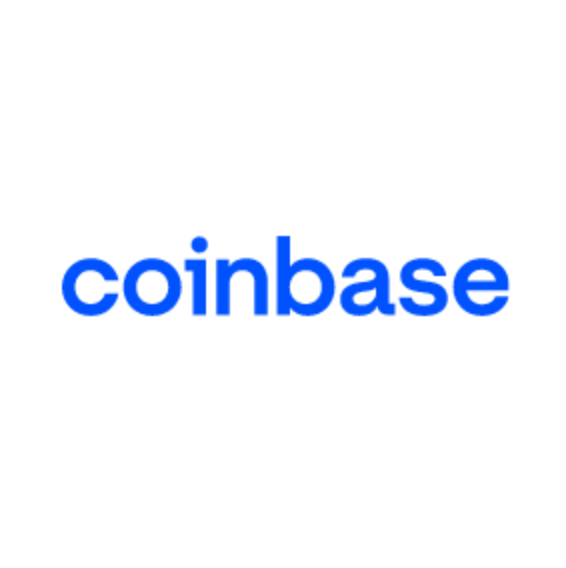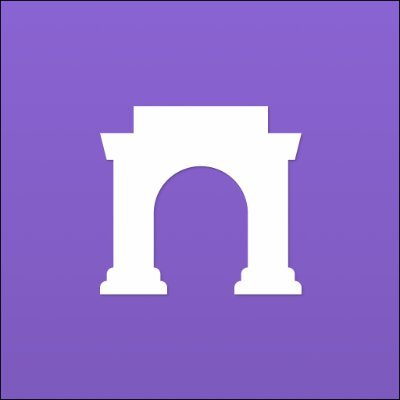Detailed Explanation of IOSG Frames: What is the Charm of Mini Programs in Farcaster?
Written by: Wendy, IOSG Ventures
Farcaster, as a highly regarded and favored decentralized social protocol, has secured $30 million in funding from top-tier institutions like A16z, with Vitalik personally expressing his fondness for the project. Founders of funds like Variant have also published articles discussing investment theories related to Farcaster. On Farcaster, many prominent figures from the tech and venture capital circles are active: fund investors, startup founders, and business leaders from exchanges like Coinbase… reminiscent of the once-popular Clubhouse.
The massive funding, top-tier endorsements, and airdrop activities captured significant market attention at its launch. However, due to its closed nature as a foundational protocol and high entry barriers (with few initial beta users and a login fee), Farcaster did not achieve a substantial market response after the initial enthusiasm waned, serving more as a niche communication space for professionals in the tech and crypto circles. Recently, user numbers have suddenly surged more than tenfold, largely due to the introduction of a new feature called Frames in its Warpast client.

https://dune.com/pixelhack/farcaster
Introduction to Farcaster Protocol
Farcaster is a decentralized social network protocol aimed at establishing direct connections between users, while developers can access public data without permission, supporting diverse and flexible client and application development, encouraging innovation and experimentation, and providing users with rich social experiences and choices. Farcaster manages user identities on-chain based on Ethereum and OP, but stores messages and posts in an off-chain Hub network to enhance speed and reduce costs. As an open social protocol, Farcaster allows various applications to be built on its foundation. Currently, Warpcast is the only fully functional client on Farcaster.
The Farcaster protocol consists of two key components: one is the on-chain registry where users can apply for a unique username, with user identities recorded and owned on-chain; the other is the off-chain servers or hosts where users store their social data, i.e., messages and posts stored in the off-chain node network that becomes the Hub.

Contracts:
Farcaster accounts are stored on-chain by contracts. The main contract deployed on the OP mainnet consists of the following three parts:
- ID registration: Account identity is referred to as Farcaster ID or fid.
- Storage: Storage space is leased to users for an annual fee, with prices fluctuating based on supply and demand.
- Key registration: Accounts can interact with apps by registering keys, which can be added or removed at any time.
Hubs:
Farcaster synchronizes and propagates data in real-time through Hub nodes. A Hub node is a server responsible for verifying, storing, and replicating messages created by each account on the Farcaster network. Applications can achieve real-time read-write interactions with Farcaster by running Hub nodes.

ENS Domain Names:
Currently, Farcaster supports two types of ENS domain names:
- Off-chain ENS names: Free, controlled by Farcaster, can be changed every 28 days;
- On-chain ENS domain names: Paid, controlled by the wallet.
Fnames (the first type mentioned above) are controlled by the fcast.id subdomain, allowing users to register and use them across all Farcaster apps. ENSIP-16 and ERC-3668 proposals detail how fnames work.
Development History of Farcaster
On July 13, 2023, the decentralized social protocol Farcaster announced the completion of a $30 million funding round, led by a16z, with participation from several VCs including 1confirmation and Coinbase Ventures. Vitalik is also frequently active on Farcaster and has expressed his interest in decentralized social platforms, stating, "Farcaster is actually very successful."
On July 27, Farcaster announced support for ENS usernames, allowing users to connect ENS domain names. On August 22, the official announcement stated that Farcaster migrated to the OP Mainnet. On October 12, 2023, co-founder Dan Romero announced that Farcaster had achieved 100% open permissionless use, with a login registration fee of $5 via fiat channels (or $3 through an invitation link), and users would be rewarded with 50 WAPS upon logging in, currently valued at $5, which can be used for tipping within the ecosystem.
Farcaster now has over 20 developed applications, nearly 80,000 registered users, and more than one million messages posted on the platform. With the launch of the Frames feature and the hype surrounding related memecoins, Farcaster's DAU recently reached nearly 30,000, with daily interactions exceeding one million. The total revenue of the protocol is also close to $400,000.


Introduction to Warpcast Features
Warpcast is the official client developed by the team based on Farcaster, supporting desktop / Android / iOS, and serves as a social application similar to Twitter/X. User registration and login do not require a cryptocurrency wallet, with annual fees payable via Google Pay or Apple Pay.

The UI/UX is very similar to X/Twitter, allowing users to comment, like, and tip on posts (casts). The Warps points used for tipping can be purchased with fiat currency at a price of $0.01 per warp. In addition to purchases, users can earn warps rewards through registration, inviting friends, and receiving tips. Users can also add specific tags when posting to indicate the channel they belong to and view discussions on specific topics within channels.
Frames
Frames is a newly developed feature similar to embedded mini-programs, allowing developers to embed interactive experiences within Farcaster posts (casts). These interactive experiences can range from voting, minting NFTs, to building games, and even integrating instant transaction checkout links directly within social media feeds, eliminating the need for platform switching. For popular Frames, there is a dedicated information stream on the Warpcast homepage.

The logic of Frames is very simple, embedded in the client’s information stream, displaying images and buttons to users, who can click to jump to the corresponding page. A Frame is an HTML web application located on a web server. The official Farcaster documentation provides detailed tutorials for developing Frames.
Since the launch of Frames, the daily active user count of Farcaster has surged, with developers rushing to build crypto-native applications, such as claiming or minting NFTs, playing games, etc. Most functions can be completed on the Warpcast page without any signature or redirection operations. According to Spindl statistics, over 400 applications have released nearly 1,000 Frames since the product launched nearly a week ago. One early hot Frame called cookiecaster implemented e-commerce shopping within Warpcast, allowing users to select cookie flavors and pay, receiving both physical cookies and a free on-chain cookie proof, reminiscent of the Bitcoin pizza renaissance.

Another common application of the Frames feature is user incentives. Coinbase's official Farcaster account, Based Institute, has launched certifications and rewards for active users, who need to meet specific criteria (such as follower count / account age / posting activity, etc.) to claim 0.001 ETH and 8,453 TYBG, a community token with meme significance.

At the same time, we are seeing more projects built within the Farcaster ecosystem cleverly utilizing the Frames feature. For example, the task program Bountycaster, created by LindaXie (former co-founder of Scalar Capital, Coinbase product manager), uses Frames to build automatic task message push notifications, allowing users to receive rewards upon completing tasks, with a noticeable increase in Frames-related tasks recently.

The creator platform Paragraph on the Base chain, backed by USV and Coinbase Ventures, has also developed and improved the Frames feature. In the information stream, the long article preview published by the Paragraph platform includes three button options: Read Online, Read Inline, and Subscribe. Read Online functions similarly to other platforms, redirecting to a web long article page, while Read Inline displays the full text in an embedded paging format within the information stream.

The hype surrounding memecoins and related NFTs has also played a significant role in making Frames a market hotspot, with dozens of times increases in a single day and tokens with over a billion FDV attracting much attention. Several tokens have been airdropped for free to early Farcaster users, and their wealth effect has drawn more new users to join Farcaster.

Why Frames is an Exciting Attempt
From the proven business paths of Web2, personalized recommendation algorithms are powerful tools for rapid growth. From Twitter to Netflix to TikTok, all demonstrate the importance of user preferences in building network effects for social media. If we look back at Facebook's growth history, during its struggles with IPO revenue issues, it attempted to provide users with more interactive response options beyond "likes," thereby sharing users and data with other businesses like Spotify and The Washington Post. However, as of today, the fragmentation of ecosystems in Web2 remains very evident. Giants are acutely aware of the importance of traffic moats, and users often need to go through multiple applications to complete actions, making identity confirmation and payments very difficult. Web3 can compress these unnecessary switches and confirmations into a single inline experience, centering on intention and user experience, hiding complex connection processes. In Web2, achieving the multi-party coordination required for these user stories is insurmountable, but in Web3, it is almost automatic, easing the difficulties of key steps in commercialization—payments.
Imagine these user scenarios:
- An influencer shares a selfie, providing a purchase link for the outfit with a 10% discount coupon. Fans can purchase with one click in the information stream: the influencer earns a commission, the manufacturer sells the product, and you complete the purchase at a discounted price with a smooth experience.
- You are reading an announcement about a new protocol and new tokens: next to the text is an intuitive purchase interface, allowing for one-click buying. This is a feature that all existing products have not yet realized.
- Someone writes a detailed long article and shares a link to the content: with a click, you can view the article of interest and pay or tip the author (and there are rewards for recommending and sharing). This only costs you a few cents, which is a different experience from purchasing an e-book or other paid content.
Of course, in the Web3 space, the integration of social and financial aspects has seen many attempts, not just the characteristics of Frames. Friend.Tech, which exploded in popularity over the past year, combines financial speculation attributes with social aspects through price curves and fee-sharing models, but the trading targets are singular (only personal keys can be traded); Telegram bots utilize Telegram's social conversation format to achieve more user-friendly DEX functions, but building social relationships has not become part of the product; platforms like Galx assist users in growth activities through task releases, but they heavily rely on traditional social platforms like X and require multiple authentication switches.
Different products explore different niche tracks, but all have explored the characteristics of blockchain's interoperable identity and transaction records. If we boldly imagine, the coupling of consumer experience and on-chain mechanisms in Web3 is very natural. By creating Frames, user-unfriendly operations like wallet signatures are hidden in the background, and seamless handling of money and digital ownership makes it possible to have a truly universal user behavior map across consumer applications, something that even the peak of Web2 could not achieve.
Conclusion
For the seemingly simple Frames feature within Farcaster, many big names in the crypto industry have expressed their admiration and optimism. The founder of ElectricCapital stated that when a new social app breaks through on a new platform, it will feed back tenfold growth to this track. And now, the crypto infrastructure is nearly complete. A16Z investors have bluntly stated that the energy of Farcaster and Frames is akin to the impact of AJAX/open web in 2005.

ElectricCapital founder

a16z crypto investor

Institutions and capital are also very enthusiastic about this new idea, with organizations like DWF Labs and Variant launching the Farcaster Frames hackathon. Frames has sparked a new wave of social dApp innovation in DeSoc, allowing developers to embed their dApp applications into the Farcaster client, enabling users to achieve various interactive experiences based on posts. Developers in the Farcaster community proudly call themselves Framers, and hundreds of Framers have already created many exciting works using Frames.
Decentralized social has always been a highly regarded track, with multiple projects attempting in the underlying data infrastructure, protocols, and application layers. We believe that the combination of decentralized finance and social will bring about significant changes and has vast development prospects. Although Frames and many social applications are still in their early stages, we will maintain a high level of interest and attention in this direction.













